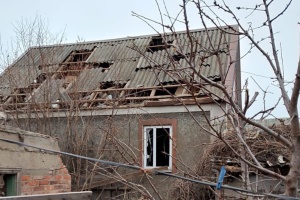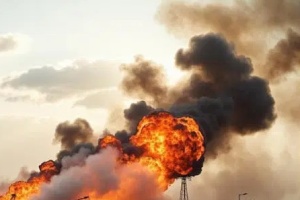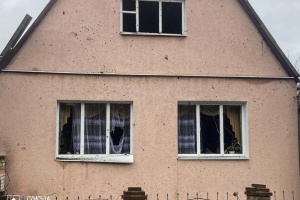
Pause in US military aid: What can be bought from international markets or replaced with domestic alternatives
If the last threads of U.S. military aid to Kyiv were cut off by the White House, Ukraine’s armed forces are not going to stay without communications, but will be left with nothing to keep an eye on Russia 24/7
Overnight on March 4, Donald Trump's administration issued new political decisions regarding Ukraine - the Pentagon was ordered to suspend all military support to Ukraine. The order applies to weapons shipments already on the way by sea or by air, or stuck in transit zones in Poland.
A year ago, when the US Congress, again by the direction of Trump while not yet president, could not vote for aid packages for allies (including Ukraine) for several months, Ukrainian forces at the Front Line were affected severely by this gap in deliveries, suffering heavy losses both in terms of manpower and the areas that would otherwise not have fallen to Russia’s control. Ukrainian defense industries have since made a huge leap in their growth and development. But would it be fair to say that we are ready to face the new challenges that emerge?
Analysts single out several points of weakness in the availability of the armaments and materiel for troops in the field, which used to comprise the most critical part of the U.S. aid. Ukrinform requested experts to share their views about how to handle these challenges if there is urgent need to search and find replacements for the weaponry, equipment, technologies and services the US used to supply. These risks are admitted even by our European partners. It emerged that discussions are ongoing at the level of the European Commission as to how to provide us with an access to satellite communications. Given that the owner of the Starlink satellite communication network, Elon Musk is a key figure in the US administration, it seems highly unlikely that he will now be willing to foot the bill, contrary to recent assurances that nothing threatens cooperation.
THE CHALLENGES NEVER SEEN BEFORE
The US support, while somewhat overestimated by the media, is still vital, believes Serhiy Rakhmanin, a deputy of the Verkhovna Rada, a member of the Committee on National Security, Defense and Intelligence. “If the US ultimately abandoned aid for Ukraine support, it will be critical, but not disastrous – provided that the lacking supplies are partially compensated for by Ukraine’s own internal reserves, and partially by Europe,” Rakhmanin said on the NV channel broadcast on Youtube. In particular, with the level of government management improved and appropriate financing found, our defense industrial sector will have enough capacities and capabilities to provide a much larger portion of our warfighting requirements than it does today. But there are the supplies that are hard to replace, including particularly Patriot air defense systems and related missiles, intelligence gathering capabilities and satellite communications.
“We know very well what it is like to live with the feeling that resources for the front line are about to run out soon. A year ago, the US Congress could not agree on an aid package for Ukraine for six months (a decision bluntly blocked by Trump’s men in Congress), but it only affected weapons of various types and purposes -- HIMARS rocket systems and munitions, 155 mm and 105 mm artillery shells, HARM anti-radar missiles, Javelin anti-tank guided missiles, drones, etc. But there was no risk of Ukraine being disconnected from an access to satellite intelligence, and HIMARS and ATACMS systems from navigation, on which we critically depend”, explains Serhii Hrabsky, a defense analyst. “The situation we had then is incomparable with what we have now. America has drawn us into an unprecedented situation in which no one in the world has ever been before, there is nothing to compare it with,” he says.
This situation is hard to evaluate in general terms, because the human factor is having an ever increasing impact on politics than ever before. According to WSJ, Joe Biden, before leaving office, ensured that Ukraine receive weapons from the US throughout 2025 to enable it to fend off Russian aggression for as long as possible. His administration awarded contracts to US arms manufacturers to supply Ukraine with ammunition, air defense systems, vehicles, and other military equipment. Programs that have already been contracted and paid for are supposed to be implemented in conformity with the law. But Donald Trump, contrary to logic and legislation, and lacking appropriate powers, can put pressure, demanding a halt to deliveries,” the expert says. Aid under this program has also been paused.

At the White House. Photo via Donald Trump's Facebook page
“And we won’t even be able to evaluate these losses, because we don’t know the volumes or terms stipulated in those contracts. It’s also impossible to predict the implications due to the same unpredictable factors,” says Hrabsky. “But we’re not panicking, we’re understanding the situation and doing everything we can to minimize potential losses.”
EYES AND EARS ON THE BATTLEFIELD
Where there are rumors and hints, it is highly likely Ukraine’s military can find itself disconnected from access to the [Starlink] satellite communication network one fine day. Last week, MEP Christophe Grudler of France's Renew party told the EU executive body in a letter that it should urgently "evaluate all possible alternative satellite solutions that the EU can offer Ukraine" to replace Starlink. European Commission spokesman Thomas Rainier said Kyiv has already "expressed interest" in how it can use Govsatcom, the EU's federated network of existing national government satellite capabilities, and IRIS², a new group not expected to be operational until the 2030s. Grudler said that speeding up Govsatcom's rollout this year by skipping the certification process could work as a stopgap measure while IRIS² is being developed. Renier said the system offers Kyiv "preliminary government services," without specifying what that would be in practice or how soon it might be operational. Other options on the table are to obtain commercial power from Eutelsat, Hispasat or SES satellites already in geostationary orbit or from the OneWeb group.
“Potential Starlink shutdown is not going to bring all communications on the battlefield to a collapse as the main communication channels for command and control are backed up with redundant fiber optics and radio relay lines, etc., explains Serhii “Flash” Beskrestnov, the head of Center for Radio Technologies NGO. Communication with brigades will remain in place, while remote electronic warfare stations, Electronic/Singal Intelligence, and drone control networks, as well as some artillery capabilities will be affected the most. All our pilots who autonomously broadcast video footage and intelligence to different sections of the frontline will no longer be able to do this. Difficulties will arise for the units deployed beyond the reach of transmission relays (in forested areas, etc.). But for several weeks now, both the General Staff and commanders of various units have been comprehensively working on possible options replacing Starlink. And in numerous instances, technical solutions will be found. These may include, for example, radio relay links, WiFi bridges, LTE 4G modems, fiber-optic communication for some locations, as well as the use of other commercial satellite networks. Starlink does not work on the Kursk front, but we are conducting combat operations there, and the Russians are also fighting without having it. That is, it is quite possible, although more difficult to operate in absence of an access to that network. It is more difficult and far more expensive: while a Starlink terminal costs $500, alternative satellite Internet kits are priced at $2,000-10,000 to $50,000-60,000.
Indeed, some preparations are required to be done. For example, mobile operators need to shore up the capacity of some of their base stations. If all the Defense Forces have to swiftly switch to LTE 4G, the network will be incapacitated by overload, explains Beskrestnov. “This issue is being worked on, and, I hope, solutions are being prepared to handle this at different levels.”
However, not all units will switch to LTE 4G: there are simply no mobile towers, hence no communications operating on the first or second lines of defense. So far, it’s only the Starlink network that provides the units with eyes and ears on the battlefield.
Starlink systems have seen massive use by Ukrainian forces. According to some reports, the Defense Forces already deploy 100-160,000 Starlink terminals. But these are frequently used for purposes other than military use. “A significant (if not the major) part of them is bought by soldiers at their own expense for communication with families at home,” Flash explains. “In some areas, this is the only way they can keep in touch with them. And this is also an important role of Starlink, because it is psychologically very difficult without the support of loved ones.”
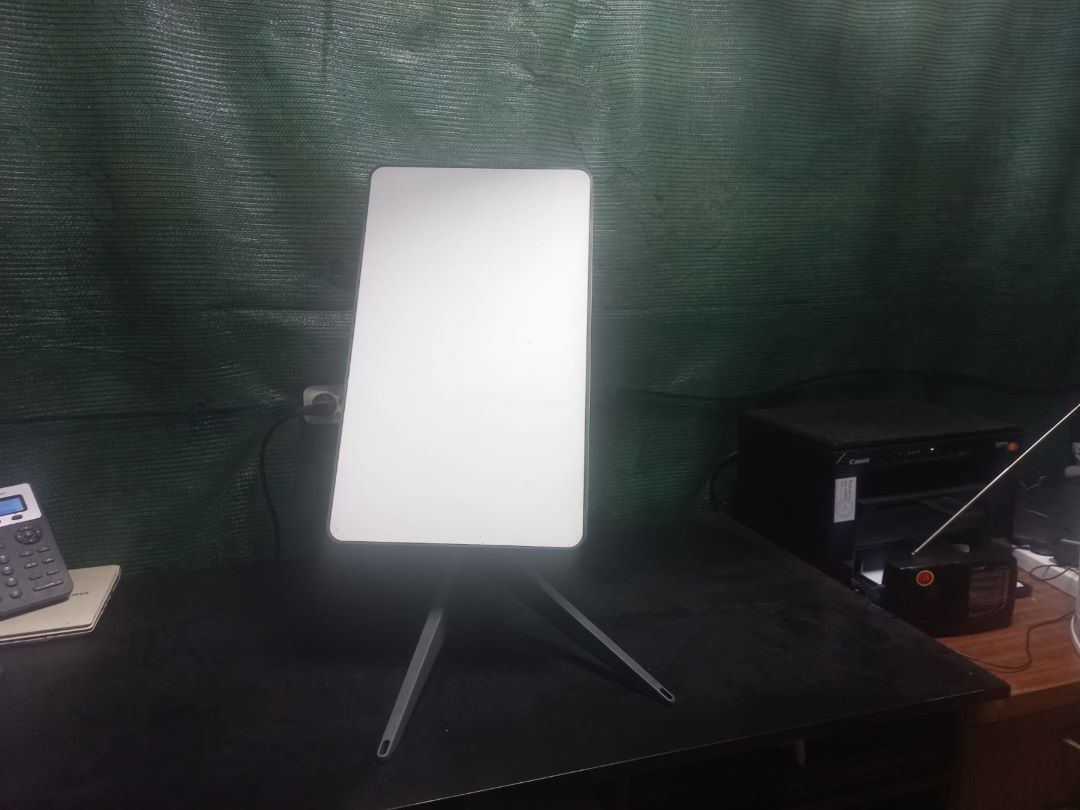
Potentially can become useless. Photo via Author
According to Serhii Beskrestnov, SpaceX is unlikely to cut off Ukraine from an access to its Starlink network. After all, tens of millions of dollars a month are hard to come by. Some of the terminals had been contracted by the Pentagon, which makes them harder to turn off than commercial ones. “I’m afraid that something else could happen – the US will lift sanctions on the Russian Federation and SpaceX will start providing services on its territory.” And it will very soon before we lose a huge tactical advantage, because the Russians will have enough budget to provide all their army with Starlink satellite connectivity, making it better managed and more effective in war. Such a scenario is pretty realistic: for Elon Musk, this will secure access to a new, huge market, several times more capacious and rewarding than the Ukrainian one.
Musk, a businessman, has not been doing well lately: Tesla shares have lost 40 per cent of their value since the start of the year, Bloomberg reports. This is mainly due to a sharp decline in electric car sales in Europe, which fell by approximately 50 per cent. Traders are increasingly skeptical about the company's ability to maintain its position in the electric car market. Investors are concerned about Musk's political activity, saying the billionaire is excessively focused on politics, not on market competitors. One of the causes behind the electric car sales crisis in the European market is believed to be a negative reaction to Elon Musk's interference in regional policies. Tesla sales have fallen (market share declined to 4 per cent from 14 per cent), this at a time when the overall electric car market in Germany grew by more than 50 per cent year-on-year in January. That is, Musk’s involvement with politics comes at a price for his business. And who knows whether he will dare to ruin SpaceX's reputation by disconnecting hundreds of thousands of users from its services. But knowing his intention to withdraw the United States from NATO and the United Nations, why not?
TIME TO LAUNCH SATELLITES
It is not yet possible to predict how much the intel and information sharing shutdown will affect our war waging capabilities, says Serhii Hrabsky. For now, there is no official confirmation about the termination of cooperation in this area, but the night is young. “We can only guess what our partners are sharing with us - this information is classified,” says Beskrestnov, an expert in defense electronics.
But for average Ukrainians, this intelligence is important in that it warns them of incoming missile attacks from Russia. Indeed, warnings about missile launches were provided by partners from the early stage of the war – about Tupolev bombers taking off somewhere from Engels or near Murmansk, or about an Iskander missile being prepared for launch or put on combat alert in the Voronezh region. It will be difficult without this information. Because today, whenever an Iskander is launched, we have a few minutes to get to a shelter, but in case of a very short notice, given the missile’s speed, you may not even have time to raise the alarm. “The Ministry of Defense has already acquired access to high-resolution SAR (synthetic-aperture radar) images from ICEYE’s satellite fleet, under a contract signed with German defense manufacturer Rheinmetall and satellite company ICEYE in September 2024. In August 2022, ICEYE signed a contract with Serhii Prytula Charity Foundation, providing SAR satellite imagery access to the Ukrainian government. This includes the use of one dedicated ICEYE satellite for Ukraine’s specific needs and broader access to ICEYE’s entire satellite constellation for real-time imaging of critical areas. This will open up somewhat broader opportunities compared to Prytula’s ‘people’s satellite’. We will be able to receive certain data by ourselves, but will not have 24/7 access to online surveillance and reconnaissance imagery of all the territory of the Russian Federation from space.”
Due to uncertainty in the US decisions, Europeans are also reviewing their scenarios. “Some Western countries have already begun to curb information sharing with the United States to prevent critical leakage,” says the expert. “No one can predict what will happen next, but preventive measures have been taken.” The European partners will be unable to fully compensate for the intelligence provided by the USA. Previously, they themselves made use of American defense intelligence as part of NATO’s state to state integration, Hrabsky explains. If the US wishes so, Great Britain and Germany will become completely defenseless. The two countries are extremely dependent on the Americans in matters of space, intelligence, air defense, etc., says aviation expert Kostyantyn Kryvolap. France is almost autonomous: back under Charles de Gaulle, the country began to build up its domestic defense industrial capacity in such a way as to minimize dependence on other countries.
“Europeans lived under the cover of the American umbrella, not worrying that information transfers could be brought to a halt at any time,” says the expert. “There was no need to create parallel, duplicating capacities with own satellites and appropriate personnel, and so they did not do so.”
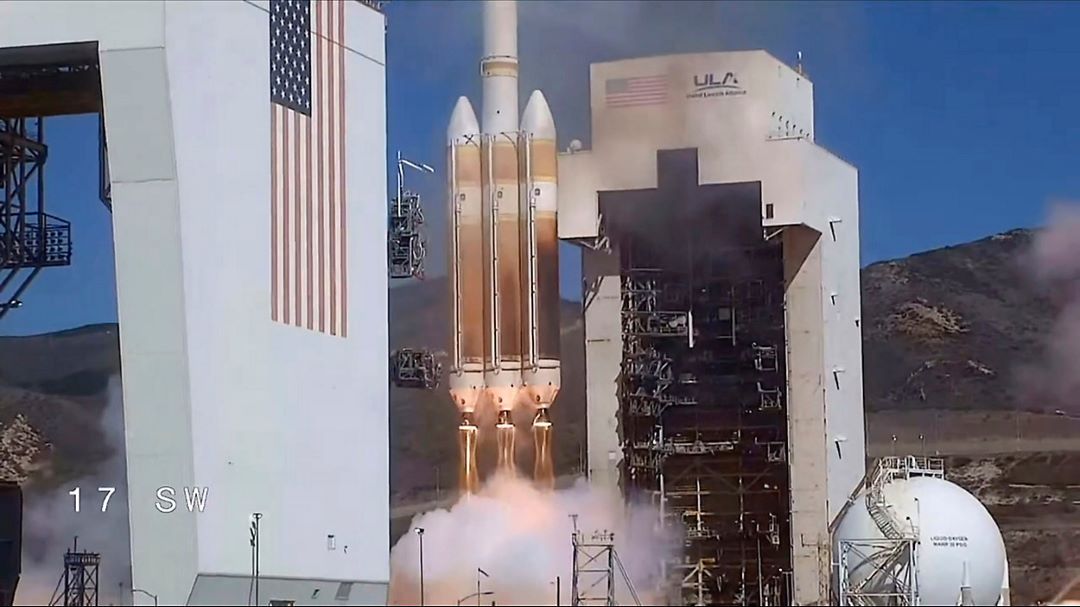
Satellite launch from Vandenberg Space Force Base in California, 2022. Photo Credit: United Launch Alliance
But today, it will take years and billions of dollars to create a spy satellite with a certain set of functions and related software infrastructure, and to train personnel. According to some reports, for example, it cost the United States more than a billion to launch the classified NROL-47 payload for the U.S. National Reconnaissance Office from Vandenberg Air Force Base in California in 2021. Basically, the USA’s dominance in space cannot be emphasized enough. According to 2024 report from the Union of Concerned Scientists (the leading science-based nonprofit working for a healthy environment and a safer world; the organization is advocating against nuclear weapons tests and weaponizing the space domain -- Ed.), more than 7,560 operational satellites are currently in orbit around Earth, including 5,184 owned by the United States, 628 by China, and 181 by Russia. Of the number total of satellites currently in orbit, 167 are used for military purposes and 4,741 for commercial purposes.
Great Britain, for example, launched its first ever dedicated military spy satellite, named Tyche, in August 2024, according to the British government website. Tyche was launched on 16 August from Vandenberg Space Force Base in California on board a SpaceX Falcon 9 rocket performing SpaceX’s ‘Transporter-11’ mission. Tyche is the first satellite to be fully owned by the UK MoD and the first satellite to be launched under its space-based ISR programme, which will deliver a constellation of satellites and supporting ground systems by 2031. As an interesting note, North Korea’s first reconnaissance satellite, the Malligyong-1, had been in orbit for about a year by that time. Furthermore, Pyongyang announced its intention of “additionally launching several reconnaissance satellites in a short span of time” and noted “the need to launch more various reconnaissance satellites, put them on different orbits and operate them in a combined and practical manner…to provide the DPRK armed forces with abundant valuable real-time information about the enemy”.
In addition to satellite imagery, the US supplied us with information regarding the infiltration of spy agents and the use of new advanced technologies by the Russian army. “It is impossible to predict what the loss of this data could lead to,” says Beskrestnov.
AIR DEFENSES – THE AREA TO BE AFFECTED MOST
Currently, the most heated debates are ongoing around what alternatives can be found to replace the American Patriot systems. In fact, there are almost none. The lack of ammunition will affect primarily aviation and air defenses, aviation expert Valery Romanenko told Kyiv24.
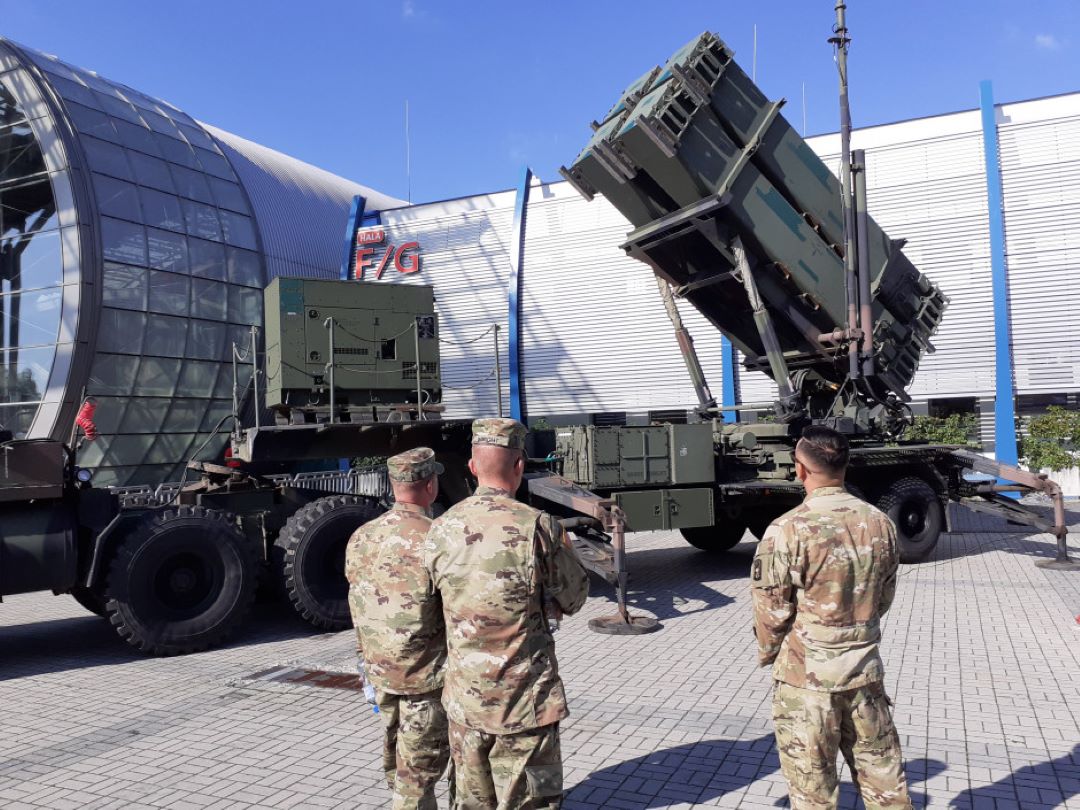
At the MSPO (International Defense Industry Exhibition) 2020 in Kielce, Poland, the United States unveiled a new version of the Patriot missile system. Photo via emkielce.pl website
According to him, we will be able to replace some of the American weapons within a span of a year with French (anti-radar missiles, aerial bombs), British (medium-range missiles) and our indigenous (the Trembita missile, which is roughly equivalent in functionality to HIMARS multiple launch rocket) capabilities, but will not be able to find replacements for NASAMS and Patriot missiles. NASAMS will have to be used less, or we will have to rely on German IRIS-T systems, provided that the Europeans increase production of both these systems and other types of weapons, because the current production rates are obviously insufficient to meet the intensity of combat operations in Ukraine. Romanenko called the situation with the availability of Patriot missiles a “dead end”, as it was only in November 2024 that Germany launched a production line for these missiles, but not in the modification dedicated specifically to interceptions. Anti-missiles are produced by Japan, but that country has not yet supplied anything of the kind to Ukraine.”
“Europe could at least provide us with a limited number of Patriot missiles from existing stocks, but that, however, would require a nod from the United States,” says Kostyantyn Kryvolap. The situation with the availability of missile and rocket weapons is really dire. The Russians have the potential to manufacture some 18 Kinzhal and Iskander-M aeroballistic missiles per month (there are not enough components for more as the sanctions are still in effect). “Those are the weapons that pose us a serious threat: I’m not talking about the Kh-22, which is not being produced new, and the existing ones are aging and becoming unusable. To shoot down 18 such missiles, at least twice as many Patriot missiles – 35-36 -- are needed. There are not that many of them produced worldwide. So the issue of missiles for Patriot launchers is highly complicated and urgent, and remains so, as is the issue of low availability of the launchers proper. The number of Patriot systems currently available to Ukraine would only suffice to protect the capital city from ballistic attacks. “There are no more permanent emplacements for protection from ballistic attacks. One system is probably used migrating among locations most prone to attacks,” says Mr. Kostyantyn.
In his last weeks in office, Joe Biden sought to provide as many as possible these vital missiles to Ukraine, contracting a certain number so that it would suffice for a long time (US weapons deliveries under USAI contracts are supposed to provide a steady flow of weapons through 2025 and beyond, according to Defense Express). It is yet unknown what proportion of the USAI contracts has already been completed, or whether the remainder will be brought to completion at all, which is highly unlikely under the current circumstances. “It will be difficult, let’s say, less comfortable, worse than it is now,” says Kostyantyn Kryvolap. “But this is not a disaster, and this is not going to bring us to surrender either. The situation will hopefully clear up within a week’s or two weeks’ time.”
Tetyana Nehoda, Kyiv
Headline photo via Donald Trump’s Facebook page

